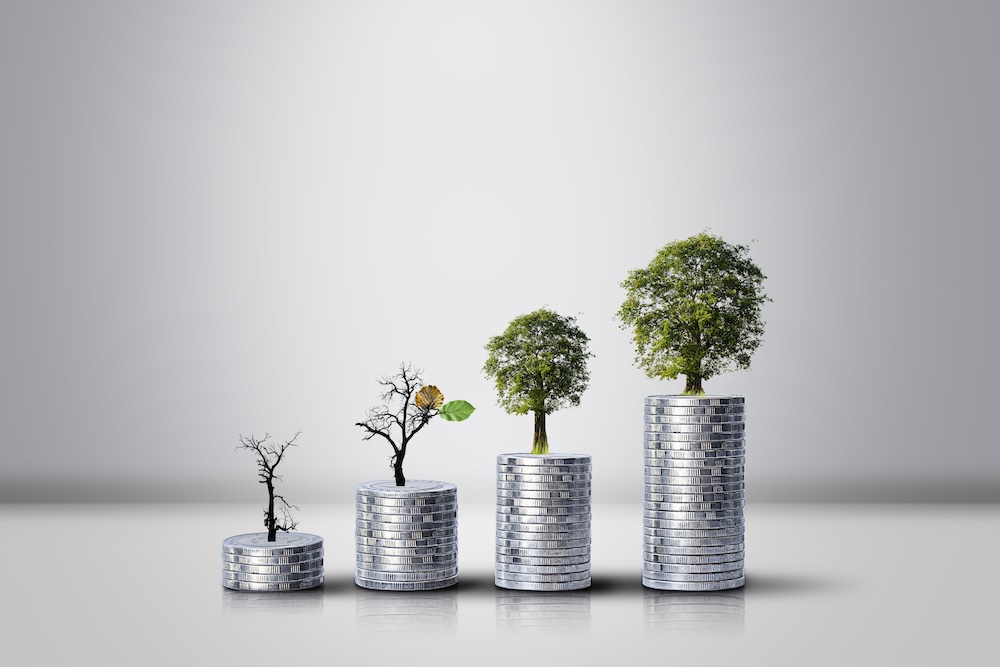Got $500 burning a hole in your climate-conscious pocket? Good news: you don’t need to be a Wall Street shark or Silicon Valley bro to invest in a better future. You just need a little strategy, a little curiosity—and a refusal to let your money bankroll climate destruction.
Whether you’re new to investing or just want to redirect your dollars away from fossil fuels, here’s how to put $500 to work for the planet (and possibly your bank account).
First: What Makes an Investment “Green”?
It’s not just slapping a leaf on a mutual fund and calling it a day. Real green investments:
- Avoid fossil fuel exposure
- Support renewable energy, clean tech, sustainable agriculture, or ethical labor
- Prioritize long-term impact over short-term hype
- Offer transparency about holdings and goals
Now let’s break down your eco-investment options—each under or around $500.
1. Buy Shares in a Climate-Focused ETF
Best for: Hands-off investors who want diversified exposure to sustainability
What to Know: ETFs (Exchange-Traded Funds) are bundles of stocks you can buy like a single stock. Some ETFs are built around climate goals, clean energy, or ESG (Environmental, Social, Governance) screens.
Top Green ETFs to Consider:
- ICLN (iShares Global Clean Energy)
- TAN (Invesco Solar ETF)
- SPYX (Fossil Fuel-Free S&P 500)
- CRBN (iShares MSCI ACWI Low Carbon Target ETF)
How to Get Started: Open an account with a platform like Fidelity, Schwab, or a no-minimum platform like Public or Robinhood. Invest your $500 across one or two funds to start.
Bonus: Most ETFs pay small dividends over time.
2. Open a Fossil-Free Robo-Advisor Account
Best for: Beginners who want automated investing and minimal stress
What to Know: Robo-advisors automatically manage your money based on your goals. Some now offer climate-aligned portfolios.
Try:
- Betterment with a climate impact portfolio option
- Aspiration (if it reopens its investment product)
- EarthFolio (minimums may be higher, but great for the future)
Perks: You can start with as little as $100–$500 and let the platform do the rebalancing, tax-loss harvesting, and impact screening for you.
3. Invest in a Green Bond Fund
Best for: Investors who want fixed-income stability + planet-positive projects
What to Know: Green bonds fund environmental projects—like wind farms, energy-efficient housing, or clean water infrastructure.
Try:
- TIAA-CREF Green Bond Fund (TGROX)
- iShares Global Green Bond ETF (BGRN)
Bonus: They’re generally less volatile than stocks and offer a way to support large-scale sustainability efforts.
4. Join a Community Solar Project
Best for: Renters or homeowners who can’t install panels but still want to support solar
What to Know: Community solar lets you “subscribe” to a share of a solar project nearby. In return, you may receive credits on your utility bill and help power your grid with clean energy.
How to Start:
- Google “community solar near me” or check platforms like Arcadia or Common Energy
- Look for options with no upfront cost or low buy-in
- Some allow investments or contributions starting around $100–$500
5. Buy Equity in a Green Startup (Even as a Non-Accredited Investor)
Best for: Risk-tolerant investors who want to support innovation
What to Know: Equity crowdfunding platforms like Wefunder, StartEngine, or SeedInvest let regular people invest in early-stage companies—including those focused on sustainability, cleantech, or ethical consumer goods.
Risks: High. These are startups. But the potential impact (and return) can be big.
Pro Tip: Look for companies with transparent financials, mission alignment, and a clear roadmap.
6. Use a Climate-Friendly Investment App
Best for: Investors who want a seamless mobile experience
Apps Worth Exploring:
- Carbon Collective – Automated portfolios fully divested from fossil fuels
- Newday Impact – Offers impact portfolios with a minimum as low as $5
- Goodfolio (UK only currently)
These platforms make it easy to start with $500 or less and build over time.
7. Support Regenerative Agriculture (Yes, Really)
Best for: Mission-driven investors looking for tangible, local impact
Try:
- Steward – A platform that allows you to invest directly in small regenerative farms and food businesses
- Some projects start at $100–$500, with terms that return your money with interest over time
Why It’s Awesome: You’re literally helping to rebuild soil, reduce emissions, and support ethical food systems.
8. Micro-Invest in a Climate Resilience Project
Best for: Hands-on eco-investors
Use platforms like:
- Abundance Investment (UK)
- Raise Green (US-based)
- Mosaic Solar Loans (formerly offered bonds to individuals—worth watching for updates)
These projects fund everything from solar installations to energy-efficient building retrofits.
FAQs: Planet-Positive Investing Under $500
Q: Isn’t $500 too small to make a difference?
A: Not at all. It’s a powerful start—especially if you’re investing consistently. Think impact + influence. You’re shaping demand for sustainable finance.
Q: Should I prioritize returns or impact?
A: Why not both? Many green ETFs and bonds offer competitive returns while aligning with your values. Just read the fine print.
Q: Can I invest without opening a brokerage account?
A: Yes—some apps and crowdfunded platforms let you invest directly without a traditional broker.
Q: What if I want to stay liquid?
A: Stick to green ETFs or savings tools like high-yield accounts at ethical banks.
Final Thoughts
You don’t need a trust fund or finance degree to invest in the planet. With $500 and a little intention, you can back clean energy, fund the future of food, or help make finance less gross.
Green investing isn’t about being perfect—it’s about pushing your money to do better. And it starts with just one choice.









Reader Interactions